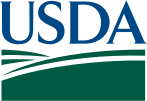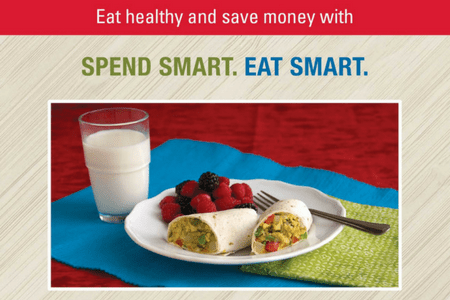Make Every Bite Count
WIC food packages and nutrition education are the chief means by which WIC affects the dietary quality and habits of participants. Did you know that these two benefits are among the top reasons for continued participation in WIC (in addition to the work of WIC personnel!), and that consistent 4-year participation in WIC was associated with better diet quality?
Eye on Nutrition brings focus to the foods and nutrients in the WIC food packages to shine a light on their importance to WIC participants. Given protein is essential for growth and development, and protein foods provide other essential nutrients, Eye on Nutrition takes a closer look at this macronutrient.
Be sure to check out protein-rich recipes members of the WIC community have shared with us, and send us yours!
What is Protein?
Why is Protein Important?
What WIC-Eligible Foods Provide Protein?
Is Protein on the Nutrition Facts Label?
Education Resources
What is Protein?
Protein is an essential macronutrient that is considered “the building block of life”. It’s a major part of our nails, skin, hair, muscle, bone and internal organs, helps deliver oxygen to cells, and keeps the immune system working. It’s in every single cell in our body and is needed to repair cells, make new ones, and ensures we grow and develop properly.
Proteins are a part of all biochemical processes in our body and many different life-sustaining functions.
Why is Protein Important?
The Dietary Guidelines for Americans identify protein as a core element of a healthy dietary pattern and recommend eating a variety of proteins from both animal and plant sources, and provide a dietary pattern with for those following a vegetarian diet.
Whether eating a plant-based or animal-based diet, getting adequate protein is especially important during times of rapid growth and development.
Protein is crucial for a baby's growth throughout pregnancy and is among the key nutrients that support neurodevelopment.
Protein foods provide critical nutrients needed for the rapid brain development that occurs from birth through the first two years of life.
Starting in the second trimester, pregnant women generally need more calories a day to support their baby’s growth and development. Likewise, breastfeeding mothers need additional calories each day for milk production. Lean protein sources can serve as good, nutrient-dense options.
Protein foods also provide other nutrients (iron, zinc, magnesium, and B vitamins, for example) that can differ depending on the food. Varying protein food choices can provide a range of nutrients designed to keep the body functioning well.
What WIC-Eligible Foods Provide Protein?
- Canned fish
- Peanut butter
- Eggs
- Legumes (beans, peas and lentils)
- Milk and milk products as well as milk alternatives:
- Yogurt
- Cheese
- Soy beverage
- Tofu
- Whole grains (barley, brown rice, oats, whole wheat pasta and bread, etc.)
- Breakfast cereals, both hot and cold (depending on the main ingredient, some provide more than others)
- Vegetables (soybeans/edamame*, sugar snap peas, green peas, asparagus, broccoli, corn, Brussels sprouts, potatoes)
*Technically soybeans are in the legume category, but they can be purchased with the CVV since they are only available in fresh and frozen forms, so we included them here!
Check out these protein-rich recipes that feature WIC foods.
Foods beyond those in the WIC food packages that are high in protein include meat, poultry, nuts and seeds as well as other seafood (see Education Resources for advice about fish and mercury) and other whole grains, like kamut, teff, quinoa, wild rice, millet and couscous. It also includes other soy products like tempeh and veggie burgers.
While cow milk products (e.g., yogurt, cheese) can be introduced to infants before 12 months, infants should not consume cow milk or fortified soy beverages before age 12 months to replace breastmilk or iron-fortified infant formula. Cow milk does not have the correct amount of nutrients for infants, and its higher protein and mineral content are hard for an infant’s kidneys and digestive system to process.
Is Protein on the Nutrition Facts Label?
It’s mandatory for manufacturers to list protein on the Nutrition Facts label.
While Americans usually get more protein than they need in their diet, it’s important to emphasize the importance of making nutrient-dense choices. Meats and poultry vary in fat content and include both fresh and processed forms. Most intake of meats and poultry should be from fresh, frozen, or canned, and in lean forms (e.g., chicken breast or lean ground turkey) versus processed meats (e.g., hot dogs, sausages, ham, luncheon meats).
Education Resources
You can find resources to share with WIC families about protein foods, nutrients they contain, and making lean or low-fat choices on MyPlate.
You can also find specific advice about eating fish for pregnant and breastfeeding women and parents, with a chart to make it easier to choose options lower in mercury, as well as additional Guides For Hispanic and Chinese American Families available from FDA.
Those following a vegetarian diet, from young children to pregnant women, can obtain the protein they need, but may need to take special care to ensure nutrient adequacy. Women (and parents and caregivers of children) should consult with a healthcare provider to determine whether supplementation of iron, vitamin B12, and/or other nutrients, such as choline and zinc, is necessary and if so, appropriate levels to meet their unique needs.

 WIC Works Resource System
U.S. Department of Agriculture
WIC Works Resource System
U.S. Department of Agriculture



